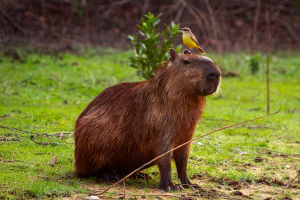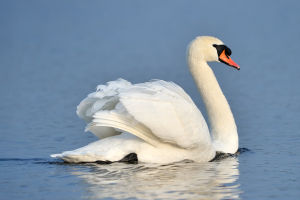Have you ever watched a kangaroo effortlessly leap across the Australian outback and wondered—how do they do it without tiring out? Unlike most animals, kangaroos don't walk or run.
So, what makes these marsupials such masters of motion? Let's uncover the biomechanical and physiological secrets behind their incredible jumps.
The Mechanics of Kangaroo Movement
Kangaroos rely on a form of movement called saltatory locomotion, which means jumping or hopping. While this may sound energy-intensive, kangaroos have evolved unique adaptations that actually reduce the energy cost of movement as they increase speed. This is in stark contrast to most animals, including humans, who require more energy the faster they go. Kangaroos, on the other hand, become more efficient at higher speeds—an extraordinary trait shaped by evolution.
Powerful Hind Limbs: Engineered for Flight
One look at a kangaroo's body makes it clear that their strength lies in their legs. The hind limbs are exceptionally long and muscular, acting like springs. These legs allow kangaroos to leap up to 3 meters high and cover 7–9 meters in a single bound. Their large feet give them a stable platform for takeoff and landing. But jumping isn't just about strength—it's also about smart energy use, and that's where their tendons come in.
The Secret of Elastic Tendons
Perhaps the most fascinating element of kangaroo movement lies in their Achilles tendons, which work like rubber bands. When a kangaroo lands, these tendons stretch and store mechanical energy. On the next jump, that energy is released, powering the takeoff with minimal effort from the muscles. According to biomechanical research from the University of California, kangaroos recycle up to 70% of their jumping energy through this elastic system. It's like having springs in their legs that never wear out!
Energy Efficiency in Motion
Most animals use more oxygen and burn more calories the faster they move. But kangaroos break this rule. Studies using oxygen masks on red kangaroos have shown that their oxygen consumption stays nearly constant as they increase their hopping speed. This means they can travel long distances without a proportional rise in fatigue. For animals living in arid, resource-scarce environments like the Australian bush, this is a major evolutionary advantage.
The Role of the Tail
Kangaroos also use their muscular tails as a fifth limb. When moving slowly or grazing, the tail helps support body weight and provides balance. During rapid hopping, the tail acts like a counterbalance, helping stabilize the body in mid-air and upon landing. Recent research even suggests that kangaroos use their tail in a tripod-like walking motion, contributing to forward propulsion. So, in many ways, the tail is an unsung hero of kangaroo locomotion.
Breathing in Sync with Hopping
Another incredible adaptation is how kangaroos breathe while jumping. The movement of their internal organs, particularly the liver and diaphragm, is synchronized with each hop. When a kangaroo lands, the impact pushes the organs upward, helping exhale. As it takes off again, the downward shift of organs helps inhale. This passive breathing mechanism reduces muscular effort, allowing them to oxygenate their bodies more efficiently during continuous movement.
Adapted for the Harsh Outback
Kangaroos have evolved in the hot, dry landscapes of Australia, where food and water can be scarce. Their efficient locomotion allows them to cover vast distances in search of food without overheating or running out of energy. Combined with their low resting metabolism and ability to conserve water, kangaroos are perfectly adapted for survival in tough environments. Every part of their anatomy is designed to stretch the limits of endurance and efficiency.
Comparing Kangaroos to Other Jumpers
While many animals jump—frogs, rabbits, and gazelles—none do it quite like kangaroos. Frogs, for example, rely on one powerful leap but quickly tire. Rabbits use hopping primarily at short distances and slower speeds. Kangaroos, by contrast, can sustain their high-speed bouncing for kilometers, making them unique in both endurance and biomechanics. It's a level of specialism that few species can match.
Young Kangaroos Learn to Jump
Baby kangaroos, or joeys, develop their jumping skills inside their mother's pouch. Once they're big enough to emerge, they practice hopping close to their mother's side. Within a few months, they master the complex coordination of limb movement and balance. The ability to hop efficiently isn't just inherited—it's also refined through learning and experience, just like walking in humans.
Applications in Human Technology
The study of kangaroo movement has even inspired designs in robotics and prosthetics. Engineers have looked to their elastic energy storage and minimal oxygen usage as models for energy-saving systems. Some modern exoskeletons and spring-loaded running devices borrow from kangaroo mechanics to improve performance and reduce fatigue. Nature, once again, offers valuable lessons in efficiency.
Conclusion: Nature's Jumping Marvel
The kangaroo is far more than a national symbol of Australia—it's a living example of nature's brilliance in efficient design. From powerful limbs and elastic tendons to synchronized breathing and tail-assisted balance, every part of a kangaroo's body plays a role in making hopping an art form. Next time you see a kangaroo bounding effortlessly across a plain, take a moment to appreciate the science behind that leap. What other animals do you think could inspire future innovations? Let us know—because nature is full of surprises worth exploring.


